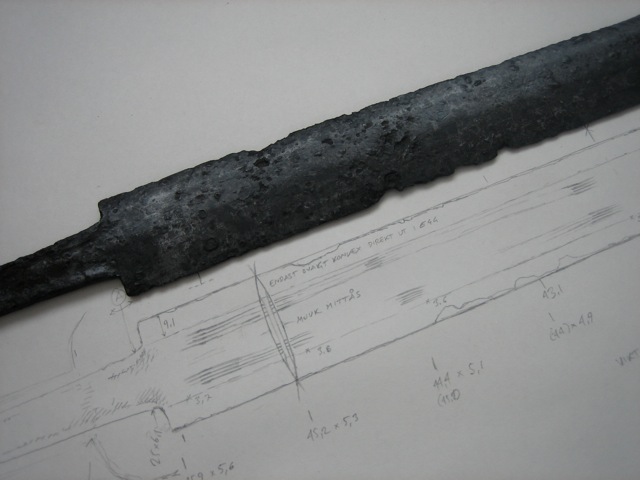Posts: 278 Location: Lock Haven Pennsylvania
Sun 01 Aug, 2010 9:33 am
Lucas,
I think this can be a tricky thing, because the Roman absorbed so many cultures into their empire, that there was probably a lot of variation. I would narrow down your area of interest to a specific time, and area of the Roman Empire first.
As far as
distal taper goes... I am under the impression that there is not a whole lot of distal taper on most historic examples. These swords where used in tight formation, and the thrust was more important. It would make sense for the blade to be fairly stiff. Some of the blades had a hollow ground point area that would reinforce the point and make it beefier.
Albion has a full line up of Roman swords, and they are pretty accurate to
blade geometry.
The washer that sits between the blade and the cross guard was either butted right up against, recessed into, or absent all together. The wood is a tricky are. I think the Romans preferred lighter colored hardwoods. The use of darker woods for the cross and pommel, is a modern design element. Maple would be a good choice. I have made mine out of black walnut, and cherry.
The grip can be made from a bone found in the leg of a cow. The hollow place through the middle can accept the tang. The cross section of the grips can be circular, oval, hexagonal, or octagonal.
I would take a look at the thread "Pompei
Gladius Modifications" on this forum. I was asking the same questions about a year ago, and a lot of them where similar to yours, and addressed in that thread. Legio XX is a good place for information.
Good Luck and post us a picture when you complete the sword
:lol:
Luke
